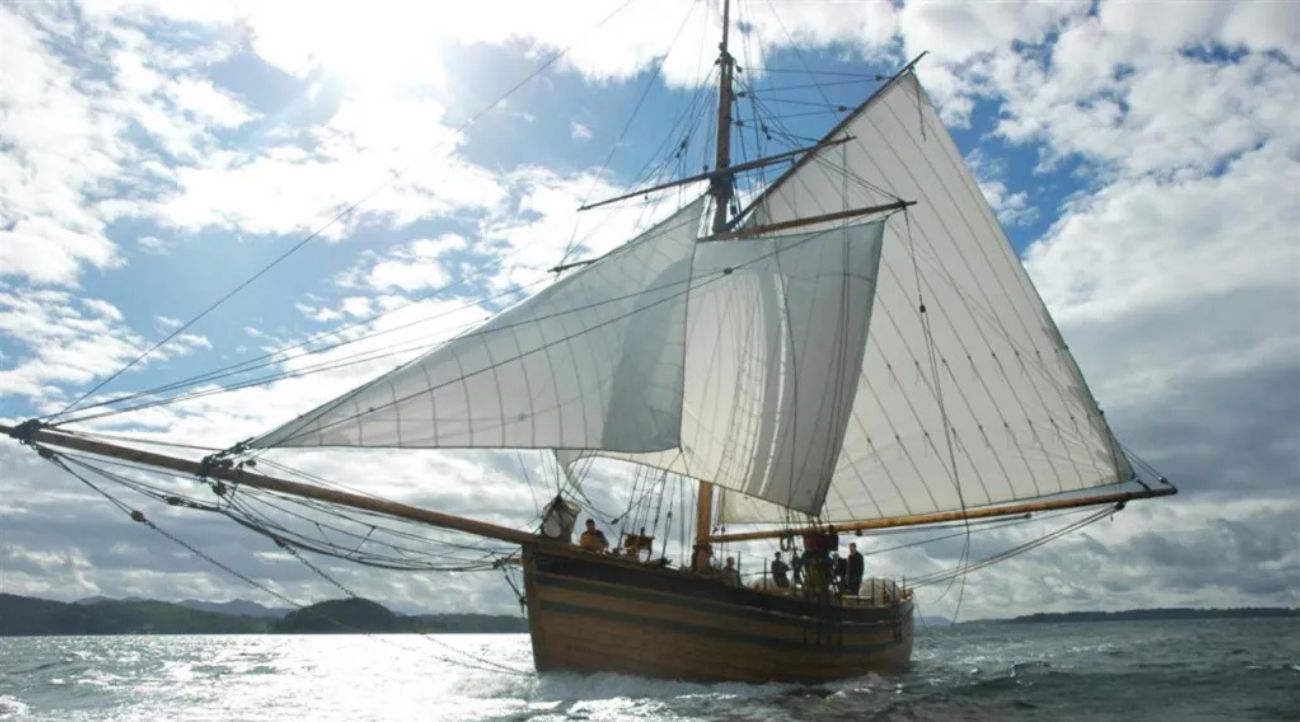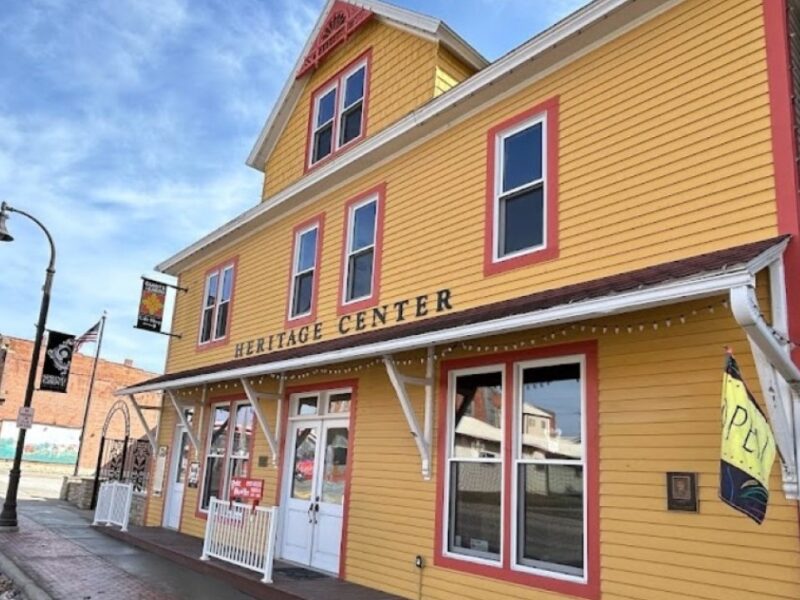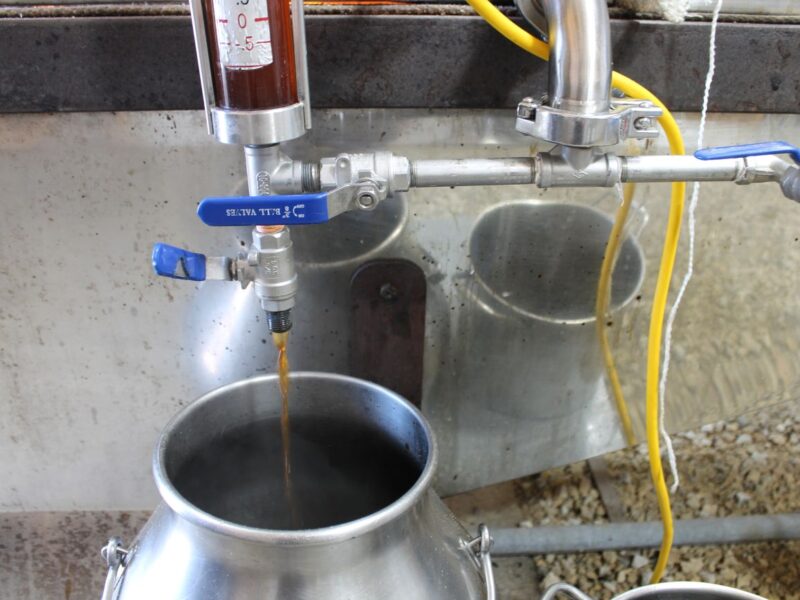A replica of “The Restauration” has been created to celebrate the beginning of organized Norwegian emigration to North America in 1825. Norway is celebrating 200 years of Norwegian emigration to North America. (Photo provided by Crossings 200)
Norway Holds A Giant Family Reunion
“Crossings 200” commemorates 200 years of organized Norwegian emigration to North America
LANESBORO – When Terje Mikael Hasle Joranger of Norway recently traveled to southeastern Minnesota on behalf of his government to talk about the history of Norwegian emigration to North America, he didn’t expect his own local family connections to become a highlight of his journey and an example of the stories he tells.
But that’s exactly what happened.
Crossings 200
In 1825 a single-mast sailboat named “Restauration” with 52 Norwegian emigrants on board left Stavanger, Norway, heading for New York. That voyage would be the first organized and direct emigration effort from Norway to North America in modern times. In the following seven decades of the 19th century, more than 900,000 Norwegians moved to the United States and Canada, a number only surpassed by Irish emigration.
Crossings 200 – which begins in 2025 – will tell that amazing story whose impact is deeply woven into the history (and the present) of Minnesota and Iowa.
Terje (pronounced Ter-yay) knows that history well. As a professor of history at the Inland Norway University of Applied Sciences and Research Director at the Norwegian Emigrant Museum in Hedmark, Norway, it’s a topic he studies, writes, teaches and speaks about often and in great depth. He is also Professional Coordinator of the Crossings 200 project. But the fact that this goes beyond mere academics to him was vividly displayed in mid-September when he visited Lanesboro and Decorah, Iowa, for a series of presentations.
Years ago, Terje connected with a distant American cousin, John Torgrimson, who with his wife, Pat, has been a long-time resident of rural Lanesboro. (John is also the current managing editor and co-publisher of Root River Current). In preparation for a family trip to Norway in 2017, Torgrimson asked family members about any known relatives in Norway. Terje’s name came up, contacts made, visits arranged. On their travels the Torgrimson family even had opportunities to visit ancestral family farms (see The Fabric that binds: A Family’s History – Root River Current).
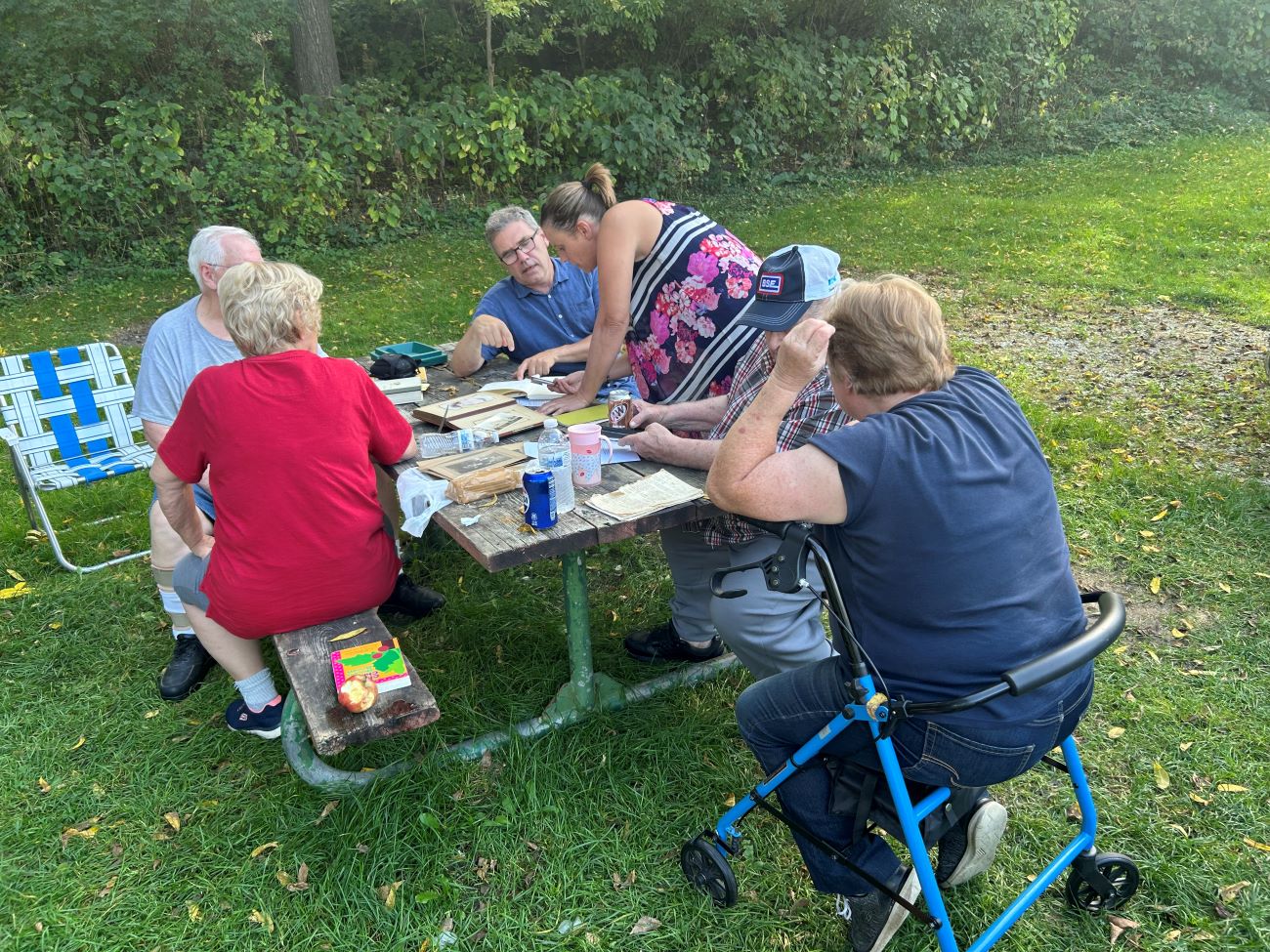
The Hogie family reunited with their Norwegian relative Terje Joranger on a sunny day in Lanesboro’s Sylvan Park. Joranger’s paternal grandmother was a Hogie. (Photo by John Torgrimson)
Hogie Family Reunion
Arriving in southeastern Minnesota for Crossing 200 events, and hosted by the Torgrimsons, Terje asked cousin John a question. “Are there any people living around here whose last name is Hogie?” Terje explained that his paternal grandmother was a Hogy (Norwegian spelling). “I don’t know,” John answered. In a technological throw-back the two men devised a plan. “Let’s look in the phone book.”
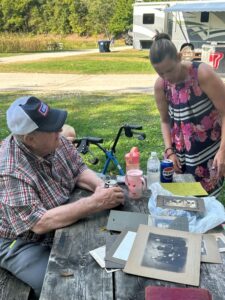
Amanda Schott and her uncle Virgil Hogie look over old photos of their Hogie family relatives. (Photo by John Torgrimson)
Yes, there were Hogies living locally; the first name they found was “Virgil Hogie.” A phone call revealed that Virgil, now 87, resides on a farm near Lanesboro. Not just any farm, though. It’s the very farm that Virgil’s original Hogie relatives had emigrated to from Norway (by way of New York, Canada, and Wisconsin) in the early 1850s. Remarkably, Virgil and other relatives have owned, lived and worked on what is now a sixth-generation farm, the same farm that Virgil, a lifelong bachelor, has been on since he left school in the 8th grade to help run. Different Hogie family members have assisted his efforts along the way and are still involved in its operation.
Phone calls were made and within hours a Hogie Family Reunion materialized in Lanesboro. Included in the gathering was Amanda Schott, also of Lanesboro, whose mother was a Hogie. She was thrilled to see all this come together.
“My Uncle Virgil and his sister, my Aunt Jalon, were able to meet Terje,” says Amanda, who lives with her own family on a farm just 15 minutes away from the original Hogie homestead. “It was so cool. We brought old family photos and our notes about Hogie family history. Terje obviously knows the family history in Norway so we were able to fill in questions on both sides. It was wonderful.”
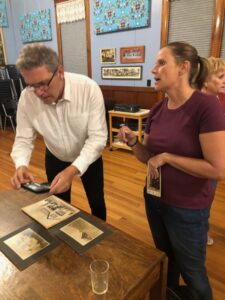
Terje and Amada Schott sharing family pictures at the Sons of Norway. (Photo by Steve Harris)
The stories they shared included details of the life of Hans Hogie, Virgil’s grandfather, who had arrived in America around 1852, gotten married, traveled to Canada, and then spent a year near Milwaukee before settling in the Root River Valley area. A 160-acre farm was purchased, children were born, families grew. As local farmland became harder to acquire, and with Dakota lands opening up, many Norwegian emigrants, including some Hogies, moved farther west.
The Hogie family farm in Fillmore County still has buildings that trace back to the original owners. Log structures are still standing (built with wooden pegs, not nails). The family still has the trunk Hans used on his trip from Norway. “Hand-made tools are there, including leather straps and harnesses used for working oxen,” says Amanda. “My great-uncle’s glasses still hang on a hook in the barn like he just left them there yesterday.”
Even more valuable than those artifacts are treasured family stories.
“We all lived and worked on the family farm in the summers, milking cows and doing chores,” remembers Amanda. “We grew up hearing stories of earlier times when uncles, aunts and cousins would make a three-day wagon trip from Lanesboro to Winona to sell farm goods and buy supplies like sugar and flour for the winter. Halfway there they’d stop at the Fremont Store for an overnight stay before traveling on. It was quite an adventure.”
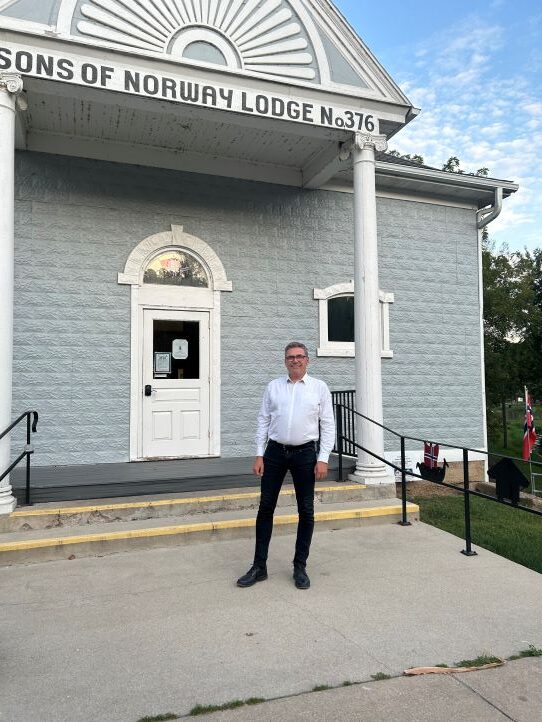
Terje Joranger outside the Sons of Norway Lodge in Lanesboro. Joranger was in the United States to promote the Crossing 200 bicentennial. (Photo by John Torgrimson)
Terje’s time in Lanesboro was limited that Monday and the impromptu reunion needed to end. But the sharing continued when Hogie family members attended his public presentation at the Sons of Norway that night. More stories and photos were passed around, more family questions were answered. Plans were made for future visits when Terje returns to Minnesota to collaborate with American organizations involved in Crossing 200 celebrations.
The evening ended with Terje at the Torgrimson home calling his 86-year-old father in Norway to let him know that he had found the Lanesboro Hogie family. He told him about the new relatives he had met and emailed him old family photos and pictures of the reunion.
Out of the 900,000 Norwegians who emigrated to North America, Crossings 200 became personal for Terje Joranger and his Hogie family members. Lost connections were found and relationships spanning hundreds of years were restored.
2025 Bicentennial
Crossings 200 is a large-scale celebration of the hundreds of thousands of people from Norway who – for many complex and complicated reasons – left their homes and loved ones behind to seek a new life in a land faraway. The bicentennial celebration in 2025 will involve activities in Norway, Canada, and the United States.
In total, about 170 public and private organizations and institutions are working together to raise awareness of Norwegian emigration and to strengthen transatlantic cooperation between the Norwegian diaspora and Norway based on a common cultural heritage.
Think of it as a giant family reunion.
To learn more about this celebration at Crossings 200.
…………………
 Contributor
Contributor
Steve Harris is a freelance writer and author of two books, “Lanesboro, Minnesota” and “Dads Like Us.” He can be reached at sharris1962@msn.com.


